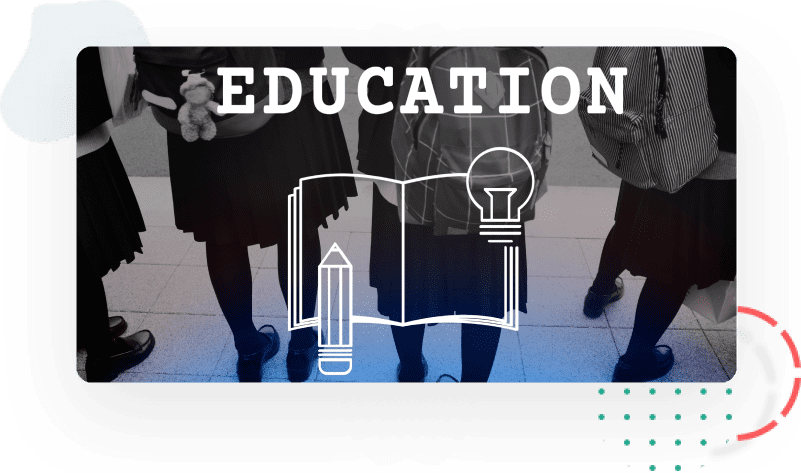Introduction
In the ever-changing scene of education technology (EdTech) making products that click with users-students, teachers, and school leaders alike-isn’t easy. But as the field grows, one idea stands out as key to success: putting users first. When EdTech creators zero in on what end-users need, like, and do, they can build tools that don’t just hit learning targets but also get people involved and make a lasting difference.
Why User-Centric Design Matters in EdTech
User-centered design isn’t a term that’s easy to describe; there’s empathy, user inclusion, user experience and so much more to convey. At its heart, it makes sure tech solves real problems teachers and students face. By putting users front and center when creating things, EdTech tools become easy to use, open to everyone, and quite helpful.
Stop and think about this: a digital testing platform that’s too complex for teachers to handle. Without focusing on users, a tool like this might not catch on even if it has cool new features. We need visual hierarchy, captivating elements, zero analysis-paralysis; we need to engage them so well with the platforms and sites that they never wish to drop. Hence, with this flip side, an interface that’s well-thought-out and makes tasks simpler can help teachers do what they do best-teach!
Getting to Know Your Users
Before you create any EdTech product, you need to know your audience inside and out. Students often like game-like features, vibrant design to keep them interested, while teachers want tools that save them time and more formal design approaches. School leaders, on the other hand, tend to care about strong data tools and the ability to grow.
Ways to Learn More:
1. Do User Research Surveys, focus groups, and interviews give key insights into user problems and what they want. For instance, teachers might talk about how hard it is to grade or the lack of tools to personalize learning.
2. Watch Real-Life Settings / Visit Real-Time Environments Following educators in classrooms or looking at how students use current platforms can show behavior patterns that help make design choices.
3. Use Data Analytics Data on how people use existing tools can show which parts they use most and where they run into trouble. Run heuristic evaluation panels with the teachers and extrapolate from there.
4. Build Personas Make detailed user personas that capture the aims, problems, and drives of different groups. This helps to make sure design choices fit various needs.
Principles of User-Centric Design in EdTech

1. Simplicity and Usability
EdTech tools should focus on simplicity, particularly for users with different levels of technological expertise. A complicated interface can hinder adoption, while a straightforward, intuitive design encourages smooth interaction.
Example:
Duolingo’s gamified language learning platform is a great example of simplicity. Its short lessons, visual aids, and clear progression paths make learning easy and enjoyable for users of all ages.
2. Accessibility and Inclusivity
Accessibility is very important. The WCAG guidelines are used widely and should be an absolute must to read and understand what they stand for. This allows the EdTech solutions to meet the needs of diverse groups, including those with disabilities. For instance, features like: Color Contrast, Voiceovers/Screen Readers, Font Size Adjustments and more; help broaden the reach and effectiveness of educational products.
Best Practices:
Follow Web Content Accessibility Guidelines (WCAG).
Always keep multilingual support for local and global audiences.
Design for low-bandwidth situations, particularly in underserved areas.
3. Engagement and Motivation
To keep users interested, EdTech products should include features that inspire learners. Elements like gamification, personalized feedback, and social learning can greatly boost engagement.
Example:
Kahoot! merges interactive quizzes with a competitive spirit, creating excitement and collaboration among students.
4. Implementation Tips:
Release beta versions to collect initial feedback.
Establish user forums or in-app surveys to promote continuous input.
Keep an eye on social media and app reviews for genuine user insights.
5. Data-Driven Personalization
Utilizing data analytics allows for the development of customized learning experiences. For example, adaptive learning platforms modify content difficulty based on individual performance, optimizing learning results.
Be Careful ??
While data-driven personalization is effective, it’s crucial to respect user privacy and comply with data protection laws like GDPR !
Real-World Success Stories
Case Study 1: Google Classroom
Google Classroom is thought to be an example of user-centered design, especially through its simple interface and the natural use of tools such as Google Drive. Giving priority to teachers in their efforts to have easier assignment management and in-real-time collaboration has made it the platform of choice for teachers across the globe.
Case Study 2: Duolingo
Duolingo is an international educational technology success story. Gamification and AI-based personalization completely change the rules of language learning. This platform is a friendly and engaging way to learn a language that resonates with millions of learners around the globe.
The freemium model allows Duolingo to be truly inclusive while bringing revenues in through subscriptions and in-app purchases. The AI system makes instantaneous recommendations to creators for necessary difficulty levels and practice based on learner output. Its continued robust growth shows how engagement and innovation can make an EdTech company sustainable while much of its competition is failing or struggling in this regard.
Case Study 3: Seesaw
Seesaw is another classic user-friendly EdTech product that intends to inspire young learners and families as the empowerment of creativity, showcasing their work through digital portfolios. The online platform also makes it easy for the teacher to give and assess students’ work thus creating an interactive and collaborative classroom.
Challenges and How to Overcome Them
While there are many advantages, implementing user-centric design in EdTech presents several challenges:
1.Balancing Stakeholder Needs
Designing for students, teachers, and administrators at the same time can create conflicts. Focus on features that meet shared needs and consider modular designs for customization.
2.Resource Constraints
Conducting user research and iterative testing demands time and budget. Begin with core features and expand based on user feedback.
3.Resistance to Change
Some educators may hesitate to embrace new technologies. Offer thorough onboarding and ongoing support to facilitate transitions.
4.Ensuring Cultural Relevance
Global EdTech solutions should honor cultural differences. This involves providing localized content, adapting teaching methods, and understanding societal norms to create a more inclusive platform.
The Role of Collaboration
1.User-centric design is not a solitary task; it flourishes through collaboration. Engage educators and students as co-creators in the design process. Their direct experiences can lead to innovative solutions that you might not have thought of otherwise.
2.Moreover, fostering cross-functional collaboration within your team; uniting designers, developers, and education specialists, ensures that educational insights guide technical choices.
3.To further enrich the design process, one may also build a multitude of partnerships. These include but are not limited to: schools, universities, non-profit education organizations. One must always test their product in real time environments, with real users of all target groups and audiences. This gives incredibly valuable insights on how well the product caters to the current market and how well it would be for the upcoming markets and design trends.
Measuring Success in User-Centric Design
Measuring Success here consists of evaluating both qualitative & quantitative factors post a product deployment and launch. There are various criteria to keep in mind:
1.Adoption Rates
This has a direct proportion relationship with that of product success. The higher the adoption rate by the target users, the higher the success rate. This in turn, also signals that the target users are benefitting from the product and that it’s great to use.
2.Engagement Metrics
The hours spent on the platform, how many times a user logs onto the system, and the number of visits tells how satisfied the user is with the UI & UX. You can never make great UX with mediocre UI and you can never make an appealing UI with mediocre UX.
3.Feedback Scores
Conducting regular surveys and tracking Net Promoter Scores (NPS) can provide valuable insights into user perceptions.
4.Lesser Drop-offs
Assess at what points and areas in the product the users tend to leave, refresh to move to another screen and many more ways they exit the system without navigating to the important parts.
5.Retention Rates
The analysis of how many users come back to the platform in the long run makes business sense.
These metrics and area points, when worked with and improved upon, the overall product offered to users can be significantly enhanced.
The Future of User-Centric EdTech

With the advent of technology over time, EdTech must be much more user-centered with concrete solutions and positively inspire the students. AI-driven personalization, immersive learning via AR/VR, and especially blockchain for credentialing promise to change the face of education.
However, it is essential that the human side be brought to the fore. Keeping user needs and empathy for them at the heart means EdTech developers can create solutions that can educate while enabling users to inspire in turn.
For Example:
Connecting the dots between parents and teachers as a collaborative partnership in a child’s development can be facilitated by AI providing real-time progress dashboards. Immersive virtual reality/augmented reality experiences would provide students with direct contact with abstract concepts instead of images or simulations via 2D projections.
In another direction, most relevant is that the Social & Emotional Learning tools will be integrated into the EdTech products. Such tools help address the emotional well-being of students while working with their academic needs ? in effect, providing a complete learning experience.
Conclusion
User-centered design is the fundamental part of developing a notable EdTech product. Knowing the audience, prioritizing usability, and cooperating with others makes it possible to create tools that stir both educators and students. The best solutions that give learners or educators motivation are the real charms behind the technologies. Knowing how to smartly use UI, UX, the pairing of the two and to present it in a way that just makes the users go “Ooh! Can’t wait to see what happens next!”
It’s all about that self-discovery process; namely, the amazing journey through the EdTech space is really not from the technologies we deal with, but the journeys and experiences of real users. So, go ahead and build it together with passion and empathy because a great educational journey starts with empathy and ends in empowerment.
Om Trivedi | Product Manager, HubbleHox




